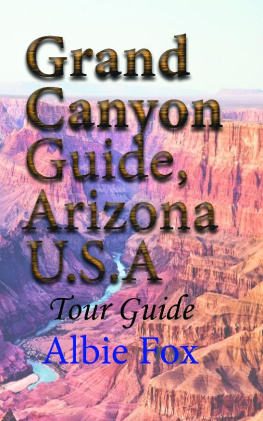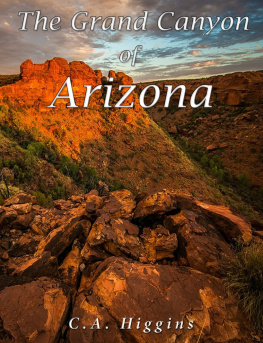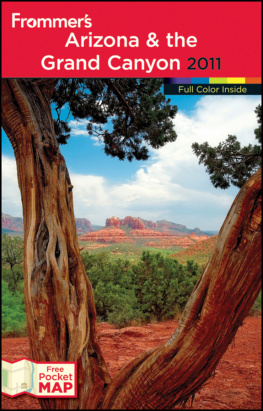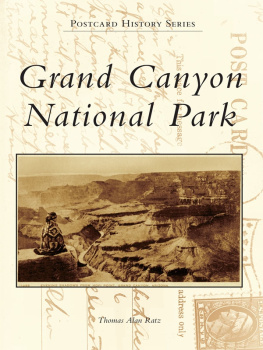About the Author
John Annerino is the author and photographer of seventeen distinguished photography books and thirty-two single-artist calendars, including Arizona Wild & Scenic and Ancient America, and the award winning books Desert Light, Indian Country, Grand Canyon Wild, Canyons of the Southwest, The Wild Country of Mexico, and Roughstock: The Toughest Events in Rodeo. His newest book, The Virgin of Guadalupe, will be published this year. Johns credits include Arizona Highways Magazine, National Geographic Adventure, Life, Mxico Desconocido, Newsweek, People, Scientific American, Time, Travel & Leisure, and other prestigious clients worldwide. In his quest to explore the renowned landscapes and hidden places of the Great Southwest with camera and pen over the last twenty-five years, John has climbed its hallowed mountains, rafted its wild and scenic rivers, journeyed on foot through its mystical chasms, and crossed its alluring deserts. He has photographed and come to know the regions Native peoples and ceremonies, Western cowboys and traditions, and Spanish heritage and celebrations.
Acknowledgments
I am grateful to the talented and dedicated people at Globe Pequot Press who illuminated my vision of portraying Arizonas spellbinding landscape in image, essay, literary quotes, and design: editorial director Erin Turner, cover designer Diana Nuhn, layout artist Maggie Peterson, project editor Meredith Dias, and text designer Sheryl P. Kober. Many seasoned wilderness adventurers accompanied meor sent meon my travels throughout the canyons, mountains, and deserts of Arizona: National Geographic Adventure editors John Rasmus, Stephen Byers, Sabine Myers, and Mary Anne Potts for sending me into tortured lands of the U.S.-Mexico border; retired Arizona Highways Magazine editors Peter Aleshire and Peter Ensenberger for sending me into the Superstition Mountains to follow the mythic trails of the Lost Dutchmans Gold; Native American guide Bill Crawley, who showed me the secret and sublime world of Monument Valley; Grand Canyon boatman and outfitter Rob Elliott, who dazzled me with his masterful run of Lava Falls; Colorado River boat woman Suzanne Jordan, who taught me how to read, captain, and run the subtle currents of the Grand Canyons Big Drops in a small paddle raft; canyoneer Richard Nebeker, who explored the Earth Cracks of Buckskin Gulch with me; author Bill Broyles, who introduced me to El Camino del Diablo, The Road of the Deviland pilots David Roberson and Bruce Lohman, Cabeza Prieta refuge manager Roger DiRosa, and writer Tim Cahill, who accompanied me on my most memorable adventures on the historic border route; and especially to my family. Thank you!
John Annerino
Before him lay the desert, but a desert suddenly and miraculously changed, a desert he had never seen before.
Stewart Edward White, 1907, Arizona Nights
A s a twelve-year-old boy, I had not yet read Stewart Edward Whites Western novel, Arizona Nights. But I did discover the miraculous spell the desert can cast over youwhat medicine men, missionaries, explorers, pioneers, cowboys, scientists, naturalists, writers, artists, poets, photographers, hermits, and all manner of desert travelers had learned from one of the worlds great deserts: You will either flee this hot, dry, empty ground at first chance, or you will be drawn into it, captivated by the elements of sun, wind, rain, and rock, your perceptions shaped by the illusion of time, space, and light. Once you are drawn into this desert place, there is no escaping ityou will spend the rest of your life trying to unravel its mysteries.
Thats what I first discovered about Arizona as a boy. Two red stone monoliths loomed high above the Sonoran Desert outside my bedroom window. I knew this because whenever I climbed up on the rooftop to study the mysterious new land my family had moved to, I could see the colossal red stones shimmering through the distant heat waves, as dust devils whirled across the desert floor. They loomed as large in my imagination as photographs Id seen in grade school of Ayers Rock in Australias great outback. I had to go to them. I did not know why. But to reach them, I had to cross the desert that stood between my familys home and the alluring red stones.
The journey from our doorstep led me and my dog down a busy thoroughfare that was used by horse and wagon riders during the nineteenth century to travel between the distant pioneer settlement of Phoenix and the Pima Indian villages. In what seemed like an interminable mile of speeding traffic, the paved-over wagon ruts gave way to the desert bajadas, lowlands, which fanned out from the base of the red stones. The bajadas were covered with strange-looking saguaro cacti that towered above us with bizarre trunk-shaped arms pointing this way and that. With the city behind us, I unleashed my young white shepherd, Nero, and watched in delight as he tried to run down black-tailed jackrabbits that exploded from beneath the green creosote bushes. He was no match for Arizonas jackalopes, as they were called. They left him gasping in the dust. So he turned his attention to coveys of white-winged doves and Gambels quail that whirred from palo verde tree to palo verde tree, and his futile chases continued across the bajadas until he finally retreated from his first days hunt. His tongue was wagging from exhaustion, he was limping, and his pelt was covered with golden burrs of jumping cholla cactus. He winced as I removed the spiny clusters from his black paws and furry white coat with a comb and tweezers. I brushed his head, he wagged his tail, and after a drink of canteen water, we continued our journey through a forest of saguaro toward the red stones. They loomed higher and higher the closer we approached, like two monolithic stone mushrooms that had just broken through the desert crust. I soon discovered, though I could not articulate it at the time, that we were crossing an indefinable line that separated civilization from the mystery of a desert sanctum. I was not well versed in the names of many of the odd-looking desert plants I marveled atthat would come laterbut I was hypnotized by the sight of ocotillos, known to some as El Bastn del Diablo, The Devils Walking Stick, waving their long, thorny arms in the warm spring breeze as roadrunners sped after gray lizards that scurried across our rocky path.
Named for the indigenous Ppago (known as the Tohono Oodham, People of the Desert) who dwelled in the vast desert lands to the south, the 1,663-foot-high red stones were officially named Papago Buttes. In 1914 they formed the heart of Papago Saguaro National Monument. Until Congress rescinded that designation in 1930, this pristine refuge covered four thousand square acres of lush Sonoran Desert that stood on the outskirts of cow town Phoenix.
When we finally reached the foot of Papago Buttes, Nero and I faced a dangerous climb to reach a large black cave I spied in the distance. I gathered firewood from beneath a palo verde tree, broke the thick pieces into manageable lengths, and stuffed them into my canvas pack.
Comprised of copper-colored sedimentary rock, identified by geologists as iron oxide hematite approximately six to fifteen million years old, Papago Buttes were as mystifying and exciting to me as the plants and animals that thrived around them; because here wind, but principally rain, ice, and freeze-thaw erosion, sculpted concave-walled caves. These formations were called tafoni, from Sicilian for windows. And they looked far and wide over the Valley of the Sun.
Three rivers converged in the Sonoran Desert basin below Papago Buttes: the Gila, the Salt, and the Verde. As early as 300 BC, ancient desert people called the Hohokam diverted spring snow melt and summer monsoon flood waters from these wild rivers into three hundred miles of canals hand-dug with wooden spades through stone-hard caliche. The prehistoric farmers used their ingenious network of canals, which Spaniards later called








